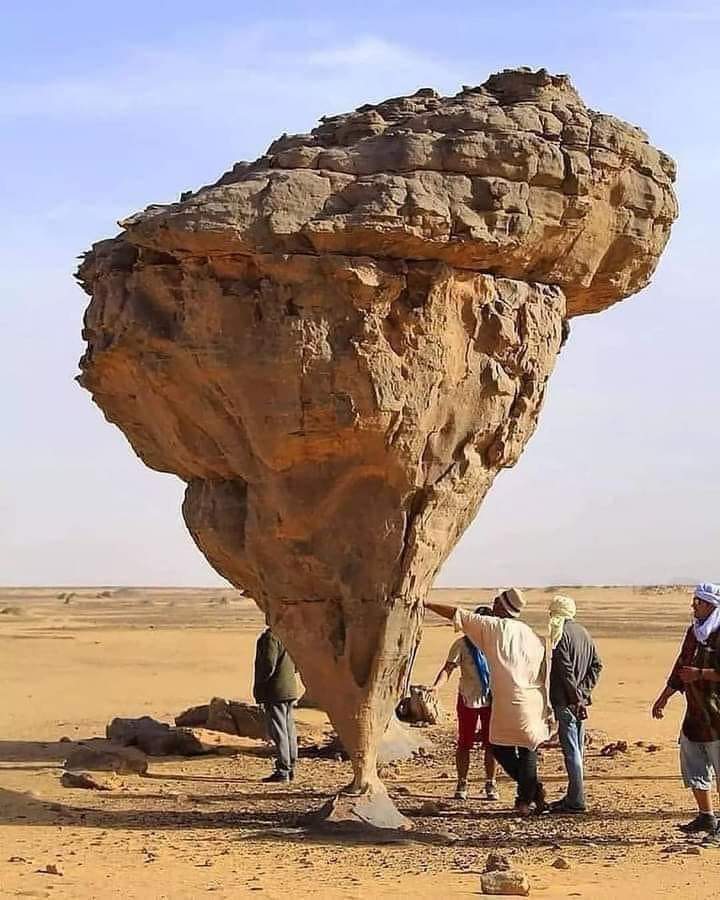Unveiling the Mysteries Behind Mushroom Rock in Tamanrasset, Algeria

Muhammad Ahamed Ali, Katsina Times
In the heart of the Sahara Desert, Mushroom Rock, also known as Champignon or Champignon de Tamanrasset, stands as a geological wonder, drawing tourists and locals alike. This investigative report delves into the unique formation's origins, cultural significance, and the ongoing efforts to balance tourism development with environmental preservation.
Formation through Millennia:
Mushroom Rock's distinctive shape, resembling a mushroom cap atop a slender stalk, is a product of millions of years of erosion. Differential erosion, where the top layer erodes more slowly than the bottom, crafted its peculiar silhouette. Wind and water meticulously sculpted the softer sandstone layers, unveiling the rock's captivating form.
Cultural and Historical Significance:
Beyond its geological marvel, Mushroom Rock holds profound cultural and historical value for the indigenous Tuareg people. As Sahara's longtime inhabitants, the Tuareg consider the site sacred, imbued with spiritual importance. This investigation explores the depth of Mushroom Rock's significance in Tuareg traditions.
Government Initiatives for Preservation:
In response to the growing popularity of Mushroom Rock, the Algerian government has taken measures to boost tourism responsibly. Local authorities now manage the site, ensuring its preservation and the safety of visitors. This report investigates the specific actions taken to safeguard Mushroom Rock as part of Algeria's natural heritage.
Tourism Development and Environmental Balance:
As tourism interest surges, infrastructure developments around Mushroom Rock are underway. Visitor centers, walking trails, and picnic areas aim to enhance the tourist experience. However, this report uncovers the delicate balance local authorities strive to achieve, promoting tourism while safeguarding the fragile ecosystem surrounding Mushroom Rock.
Future Prospects:
The investigation explores the trajectory of Mushroom Rock's future. As Algeria continues to promote tourism in the region, the report examines the sustainable development initiatives in place. It considers the potential impact on the site's ecosystem and cultural sanctity, emphasizing the importance of responsible tourism.
In conclusion, this investigative report unravels the layers of Mushroom Rock's story – from its geological formation and cultural significance to the intricate balance between tourism development and environmental preservation. Mushroom Rock remains an awe-inspiring natural landmark, beckoning curious minds to explore its mysteries.

